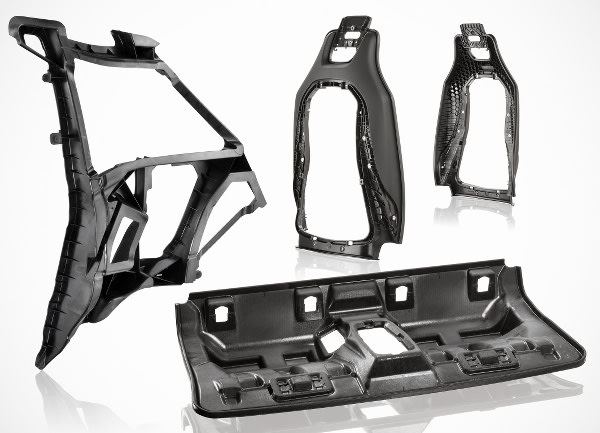 For several innovative components in the BMW i3, the electric vehicle from the BMW Group, the chemical company BASF supplies versatile plastics and supported part development with extensive construction know-how. These include the backrests of the front seats, key reinforcement parts in the carbon fiber body, and the rear seat shell.
For several innovative components in the BMW i3, the electric vehicle from the BMW Group, the chemical company BASF supplies versatile plastics and supported part development with extensive construction know-how. These include the backrests of the front seats, key reinforcement parts in the carbon fiber body, and the rear seat shell."By bringing together all our plastics expertise in the division Performance Materials, we can offer customized solutions to innovative customers such as the BMW Group and their suppliers worldwide as well as support them during component construction", says Raimar Jahn, Head of BASF's Performance Materials division. "With the BMW i3, the BMW Group has taken a ground-breaking step into the future of the automotive industry, and BASF's intelligent solutions are making a key contribution here."
Seat backrest made of polyamide
The seat backrest in the driver's and passenger seats is the first injection molded and uncoated structural component made from polyamide to have a visible surface and to be used in the vehicle interior. This lightweight hybrid component, weighing only 2 kg, embodies all the know-how of BASF's Global Seat Competence Team. The backrest, which integrates multiple functions, is made from a highly UV-stable polyamide 6 compound developed by BASF especially for such applications (Ultramid B3ZG8 UV). As well as providing sufficient rigidity, this material also ensures adequate elongation and toughness to meet the mechanical requirements of the BMW Group, and this within a temperature range of -30°C to +80°C.The seat backrest owes its final, complex and above all very slim shape to the early use of BASF's universal simulation tool Ultrasim. Thanks to the precise numerical simulation of the materials used for the backrest, release lever and belt guide, the calculated behavior in the crash simulation matched the subsequent tests very accurately. Optimization could thus take place on the computer in the early stages, avoiding modifications later on in component development. The BASF simulation method Ultrasim effectively accompanied all the certificates required by law at different seat positions, temperatures and loads.
Furthermore, the particular Ultramid grade is especially low-emission. Its very high scratch resistance and remarkable surface quality allow a visible use of the seat structure, which thus becomes an important element. Regarding the seat release lever, its material must not fail in a crash. Therefore, a special long glass fiber reinforced Ultramid grade is employed in this application: Ultramid Structure B3WG8 LF.




